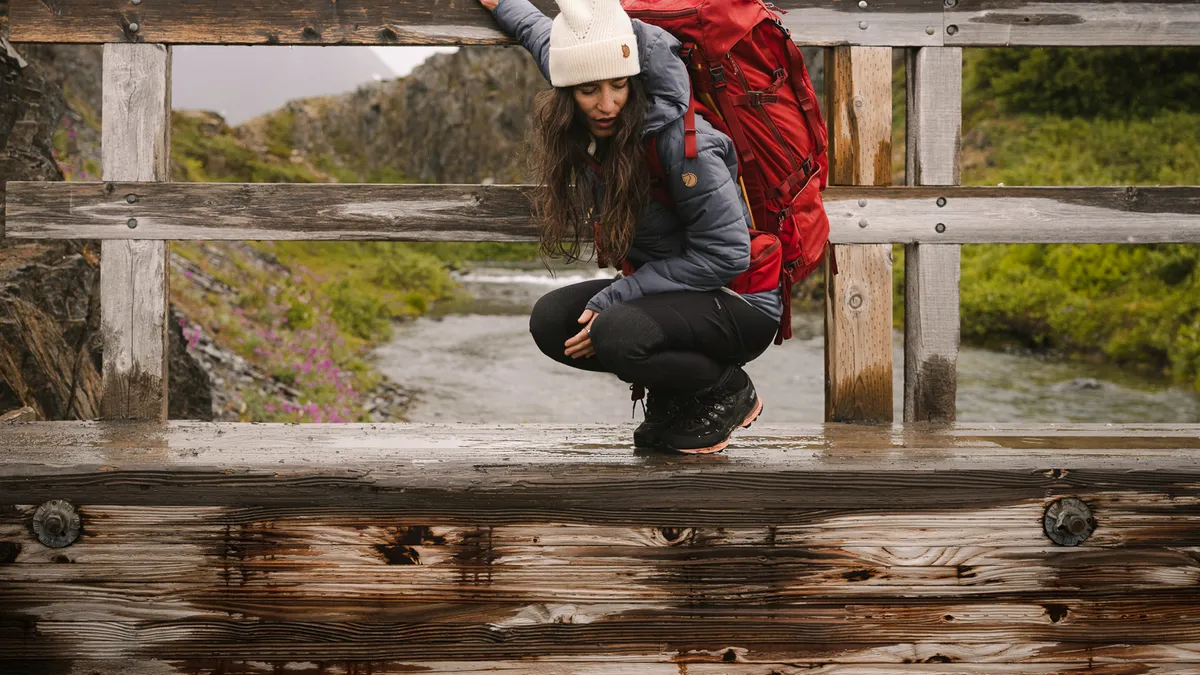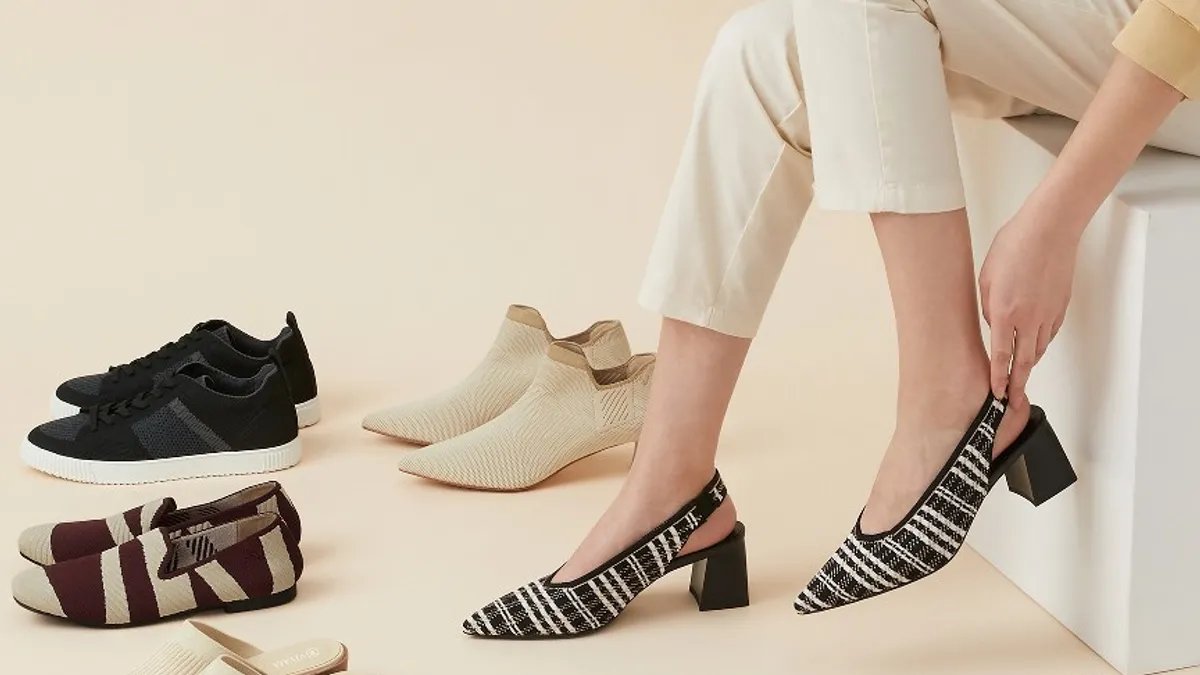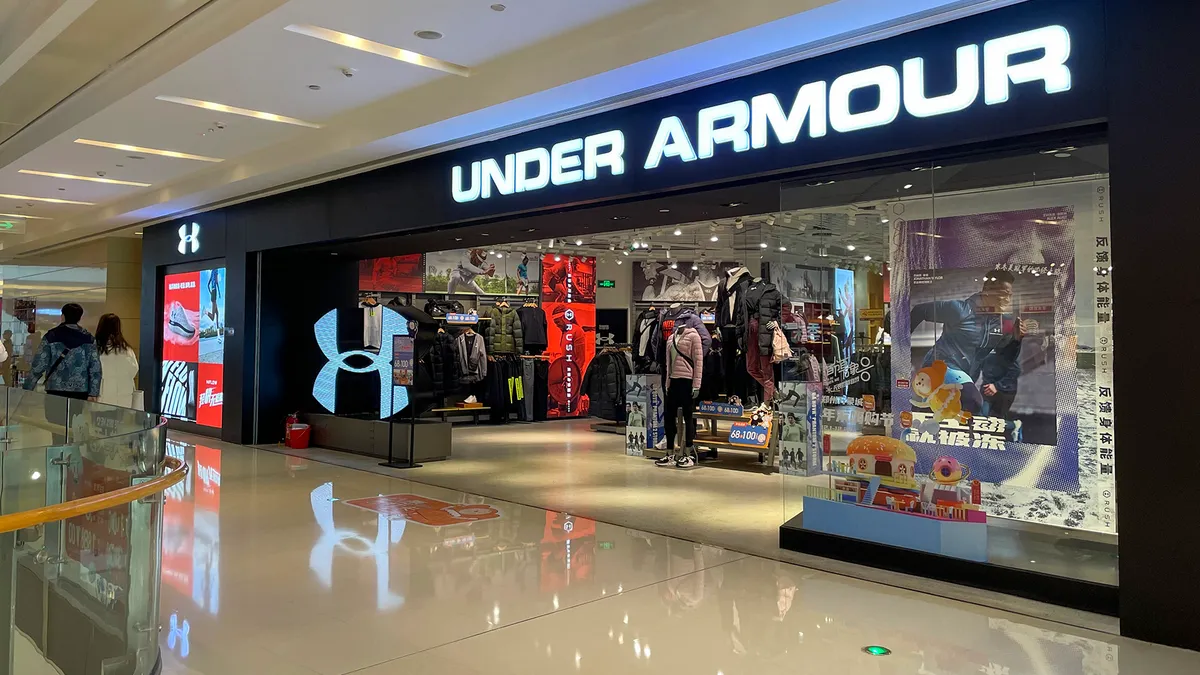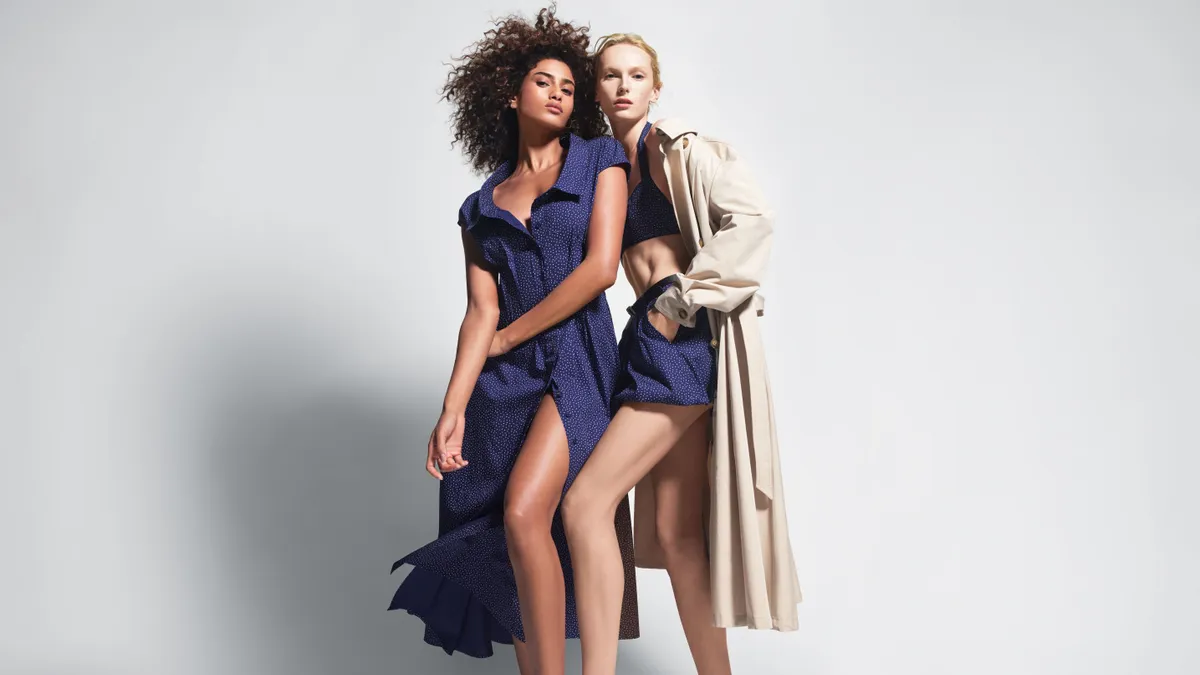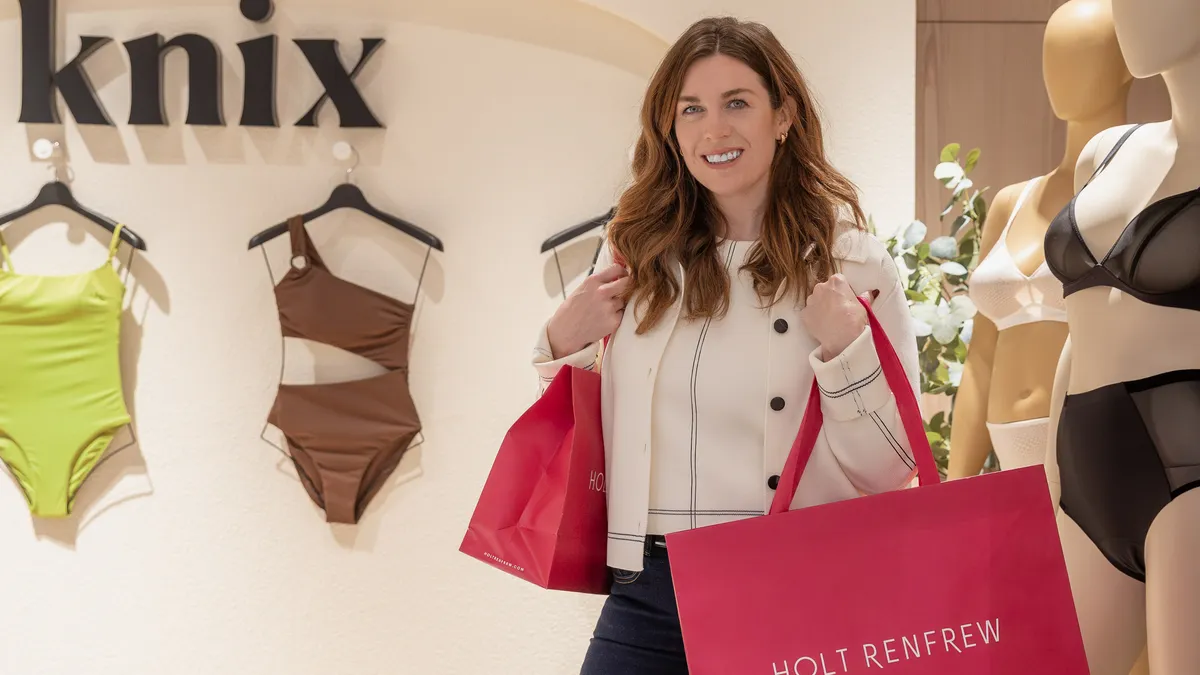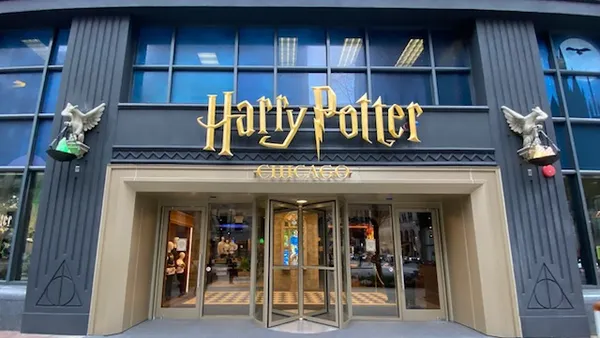2020 was a year of taking away. People lost small comforts like browsing leisurely through stores, sitting for hours at a coffee shop, visiting family and friends. It was a year where many learned to get excited about other things instead, like making sourdough bread, no matter how short-lived.
As months dragged on, the search for things to do and activities to pour oneself into reminded the general populace of something that had been there all along, but now suddenly seemed like an escape of the most remarkable kind: the outdoors. In between couch surfing and Zoom calls, people started looking out the window at the vast, unenclosed spaces around them, and realizing, "Hey — that's somewhere safe I could go."
That's meant a boom for some retailers specializing in outdoor products.
"The personal watercraft business was really good. The bicycle business has been really good. Running shoes showing some signs of life, hiking shoes showing signs of life," Matt Powell, senior industry adviser for sports with the NPD Group, said. "Walking shoes — which we haven't been talking about for a decade or more — all of a sudden turned positive in the fourth quarter. I do think we will have a spring hiking and camping season this year, and since we're up against virtually nothing that should be a big gain."
After the outdoors business — like many things — shut down last spring, the renewed interest in getting outside has come as a momentum boost for companies that have pinned themselves to active lifestyles. For Swedish outdoors brand Fjällräven, it was the exact type of movement the brand has been ready for: The brand has been working to establish itself as a larger outdoor player and has seen some growth in that department the past few years.
"It's kind of been a lifesaver in a lot of ways," Steve Stout, vice president of retail at Fjällräven, said of being positioned in the outdoors space. "People have really wanted to get out. They're traveling domestically — I mean, the national parks are full and the trails are full and people are not taking those trips where they maybe went to Europe or Hawaii or tropical destinations. They're more confined to what they have available to them — a road trip or going to a national park."
Of course, not every outdoors or active retailer has seen similar success. Indoor sports and activities have been hurt. Climbing, which had been hot before the pandemic, came crashing down this past year as gyms closed, according to Powell. Outdoors retailers also struggled at the beginning of the global health crisis with temporary closures.
Not considered essential, outdoor retailers had to close their doors at the beginning of the pandemic. When it came time to reopen, national chains often had different guidelines to follow in different states, Lise Aangeenbrug, executive director of the Outdoor Industry Association, said. After the initial period of shutdowns, OIA noted a lot more people going outside and certain sectors rebounding, which then came with supply chain issues. There's also the question of how much consumers will need next year after stocking up on gear in 2020. Overall, though, the overwhelming feeling has been one of excitement for outdoor retailers as consumers head outside more, and often as new participants.
"I think the feeling is this: There's so many more people out there and some are having first-time experiences," Aangeenbrug said. "There is always an opportunity to introduce somebody to a new experience. If you are enjoying walking on a neighborhood trail, you might become interested in trail hiking. So we don't see it as a zero-sum game, we see it as an opportunity to grow the pie and grow opportunities for people to experience the outdoors."
Finding a safe haven in nature
Thinking back to March 2020, the initial reaction of many was to stay indoors and wait for this to blow over. That made things somewhat tricky for outdoors brands thinking about what to message to consumers. Alex Faherty, co-founder and CEO of Faherty, which sells comfortable apparel with a focus on wearability and movement, said the brand tried to stay sensitive at first about its marketing, staying away from outside marketing, and only returning to it in May when things started to feel more comfortable again.
Indeed, a gain in outdoor enthusiasts can be tied directly to that timeframe, as a spike in outdoor app downloads was seen across April, May, June and July, according to a report by McKinsey and the World Federation Sporting Goods Industry. Those included apps about biking, hiking, walking and other outdoor activities.
Feeling more secure about consumer sentiment, Faherty shot its summer campaign at the beach, encouraging consumers to get outside, a theme that it carried through to fall and winter advertising as well. Alex Faherty said consumers have resonated with the message of getting out in nature and living healthy, but the company is also aware that many people are spending a lot of time inside, too, and has pivoted some marketing to display the dual use of its clothing.
"Having a big population of people who live in cities still, we pivoted video content and e-commerce shoots to be more like inside of an apartment styling, so that conceptually, that customer could see how and where they would wear it within the confines of their home, which was a brand new delivery style for us," Alex Faherty said. "Previously, it had been predominantly outside lifestyle imagery, so I think we tried to balance the two of them."
Other outdoor retailers were also focused on shifting strategies to open themselves up to a broader base of customers. For Fjällräven, its Kånken backpacks are in many ways the brand's calling card, but with nonexistent travel and practically no back-to-school season, its travel categories slowed down considerably. That meant apparel became way more important, and fortunately sales in those categories began "firing like crazy," according to Stout, especially its pants category.
Some categories saw double- and triple-digit growth as long-time users and newcomers stocked up on gear for local trips outside. Stout is hopeful that means Fjällräven will become a destination in North America for more than just its signature backpacks. The retailer has also been capitalizing on the renewed interest in the outdoors by running digital education campaigns that reward customers with freebies or discounts the more they learn about the brand.
Going into the new year, the number of newcomers that began outdoor activities in 2020 is expected to continue fueling growth in the sector, but it could be buoyed further by people committing to living healthier lifestyles after seeing the outsized impact COVID has on people with preexisting conditions, according to Powell.
"I think these activities are very sticky," Powell said. "Someone said to me the other day that if you do something for 60 days in a row, it becomes a habit. And I think we've learned lots of new habits under COVID and forgotten some other ones that we used to do."
Aangeenbrug agreed that, given how much safer being outside is compared to other activities, the pandemic has given ample time for people not only to get outside, but to have multiple repeat experiences outdoors that build the habit and make them more likely to keep it. She cited a Harris Poll from October that indicated close to 70% of Americans wanted to spend time outdoors, an almost 20% increase over what the firm has tracked for the past 10 years. Aangeenbrug added that if those numbers hold, it would be the largest annual increase in outdoor participation OIA has ever seen.
Those participation numbers are helped, in part, by people redefining what it means to get outside. Footwear brand Merrell, which turns 40 this year, wants to help with that.
Garrett McGuire, director of retail experience at Merrell, said the company has been focused on connecting customers to their local spaces and local outdoors experiences through the smaller regional retailers it sells in. The company also launched a "Hike your turf" campaign, created in about six weeks, to redefine for customers what it meant to experience the outdoors and encourage them to hike wherever they are — sidewalk, or otherwise.
"I think a lot of people think of the outdoors as like an experiential thing that you have to travel for, you know, that you have to go to the top of a mountain or that you have to fly to this exotic place," McGuire said. "And from our business performance standpoint, I think we've been really excited to see the definition of the outdoors expand — that really, it is as simple as stepping outside of your front door."
But with growing participation comes a growing number of people who may be unfamiliar with safety precautions. Outdoor retailers still want people to head outside, but it's no good if newcomers go out and get injured. Aangeenbrug highlighted an effort between almost 1,000 organizations, dubbed Recreate Responsibly, to educate people heading outdoors about safety considerations, including COVID-era practices.
"You should think about whether or not there's going to be a bathroom that's open and available — things people either don't know or they haven't had to think about, but because of COVID-19 [they need to]," Aangeenbrug said. "It's not just about wearing a mask. It's about really thinking about things and not trying to do something beyond your level that could be dangerous."
It matters where you set up camp
Picture it: You're thinking about where to build stores and decide on New York City, thinking to capitalize on the tourist traffic and raise awareness for your brand. The store does well, and it's an important marketing touchpoint, but then the pandemic hits. Suddenly that store's location isn't looking so good anymore.
Such was likely the experience of many retailers, including outdoor companies, which are learning that location is key to success during this crisis. Faherty had five stores in beach resort locations in the Northeast that did particularly well as consumers got out of the city. Alex Faherty said the retail business comped double-digits over the summer, and the brand was so inspired by the performance of its retail operations that it took advantage of a favorable real estate market and opened seven new stores in the fourth quarter, bringing its total store count to 20 from 13 pre-pandemic.
Likewise, Stout noted that Fjällräven's locations in outdoor destinations like Vail, Colorado, and Park City, Utah, have thrived this year, which he attributes to them being closer to nature. Other stores have suffered.
"It was very challenging in other areas — in some of the more metro areas or areas that were driven a lot more by tourism," Stout said, mentioning downtown Seattle, which usually sees a lot of cruise ship traffic. "That essentially was nonexistent."
The tourism drought has also pushed Fjällräven to think more critically about what's important to the brand when it comes to where to open stores and how it wants to engage with its customer base in those markets. Like Merrell, the company has honed in on communities with a local guides program, which entails electing two to three guides per store to serve for two years and help activate the community around those stores.
"There's no question that we're seeing an urban exodus here, as more companies have realized that their employees can work remotely and still be effective," Powell said. Whether or not destination stores like the ones that were successful for Fjällräven and Faherty continue to be so, though, will depend on how comfortable consumers are with traveling and what the destination is. Places that are reachable by car, potentially en route to nature destinations, will likely do well, Powell said.
Even locations in core outdoor spaces couldn't save retailers from the shift to online, though — and the importance of having a robust presence there. According to Powell, sales at outdoor specialty brick-and-mortar stores for the 12 months ending November 2020, were down 26%, while e-commerce sales for that sector were up 23%. The net result is still down 8%, given how much bigger the physical retail side is, and having a strong digital presence will continue to be key, Powell said.
Diversifying retail operations may be a solution as well. Alex Faherty said his brand is not only focused on growing its direct-to-consumer business, but also wholesale accounts with the likes of Nordstrom, Stitch Fix and regional specialty stores.
But it's not just about which channels outdoor retailers are selling through, and where their physical stores are located. It's also about who they're building their experience for, and mostly, who they might not be building their experience for. Powell believes some in the outdoor industry are too focused on the "pinnacle" consumer, who's already deeply ingrained in their chosen activity.
"That's not who has boosted this industry under COVID," Powell said. "It's been new entrants to the category. And the industry really has to pivot to thinking really hard about, 'How do I address this entry-level consumer who maybe I turned my nose up to pre-COVID who now has saved my industry?'"
Serving the entry-level consumer means changing assortments to offer entry-level products rather than selling a newcomer something above their skill level, Powell added. If retailers can do that, they can capitalize on a lot of new interest in their sector.
"Isn't that exciting for an industry that maybe has felt exclusive, or like this special thing that only a certain portion of people can experience, this has shown that that's not necessarily the case."

Garrett McGuire
Director of Retail Experience at Merrell
Merrell's McGuire said the brand is focused on that shopper through its local partner retailers, which are often the first touchpoint for new consumers, and the company is trying out different product and marketing in key local markets to better connect with shoppers there. It's perhaps telling that Merrell's core product lines — the Moab line of hiking boots and the more casual Jungle Moc — were the ones that saw "exponential growth" over the past year, as consumers looked for accessible entryways into the outdoors.
Merrell is planning a dozen new product launches in the next year, on both the performance and the lifestyle side, but those core product lines and an emphasis on being the first brand associated with getting outside for newcomers will continue to be a focus.
"Isn't that exciting for an industry that maybe has felt exclusive, or like this special thing that only a certain portion of people can experience, this has shown that that's not necessarily the case," McGuire said. He added that outdoor retailers need to think differently about product offerings and messaging to appeal to entry-level consumers.
"All of the technologies and all of the benefits — they're not there yet," McGuire said. "These are newcomers to the whole experience, so making it not scary for them is so important. I'm just excited that more people are going to be able to experience the outdoors in a way that makes sense for them without the expectations that it's this big grand thing. Because it's not always."
A twisted path
As it was for many retail businesses that were able to reopen, the summer of 2020 was better than the spring for the outdoors space. Nice weather pushed consumers outside, and they bought the gear they needed to have a good time, including paddleboards, kayaks, bikes and running shoes. Backyard activities have also surged, according to Powell, leading to sales in grills, coolers and hammocks.
The picture is more muddied than it first appears, though, and the pandemic was not a tailwind for the whole industry, nor for the whole year.
"Not every sport and not every sporting goods company, thereby, was influenced equally because some sports actually massively suffered," Alexander Thiel, partner and leader of the Sporting Goods Practice EMEA for McKinsey, said in a press briefing on the research firm's sportswear market report. Team sports and travel sports struggled, for example, while home gym and outdoor individual sports thrived.
"Depending on where a certain company found itself, where the focus lay — or how fast they were also able last year to shift the focus to following consumer demand — we saw this then also in their sales," Thiel said.
Foot Locker saw that first-hand with the difference in its namesake franchise and Eastbay, which focuses on high school athletes. The hype around running was a boon to its core business, but the trouble with school sports, specifically in regions where kids weren't allowed to play, extended to Eastbay.
"If you bought a $2,500 treadmill last summer, you're probably not going to go back and pay somebody 50 bucks a month to run on their treadmill."

Matt Powell
Senior Industry Advisor for Sports with the NPD Group
"The high school athlete this past year didn't necessarily buy baseball cleats or soccer cleats how they would have the year prior," Jason Brown, vice president of marketing for Foot Locker, Lady Foot Locker and Kids Foot Locker, said.
Powell put it more starkly, saying scholastic sports were "terrible" in 2020. However, he added that training aids were still being purchased, which indicates kids are still interested in playing sports when they're able to again.
The timing of COVID shutdowns also meant the outdoor space missed both the end of the winter season, and the spring hiking and camping season last year, according to Powell. A "general malaise" has been plaguing apparel and footwear in the space, Powell said, and popular categories pre-COVID, like climbing and backpacks, were significantly impacted by the crisis.
The attention now is on winter sports — a harder sell than the wide appeal of taking a walk outside in the summertime. OIA's Aangeenbrug said winter gear is selling well so far, especially individual sports like cross-country skiing and snowshoeing. Coronavirus variants threaten to dampen the ski business, though, if resorts are forced to close.
While not a direct correlate, how certain categories did during 2020 says a lot about what outdoor retailers can expect for 2021. Namely: more of the same.
"I think that if you bought a $2,500 treadmill last summer, you're probably not going to go back and pay somebody 50 bucks a month to run on their treadmill," Powell said. "And you're probably going to buy another piece of equipment to vary your home workout."



